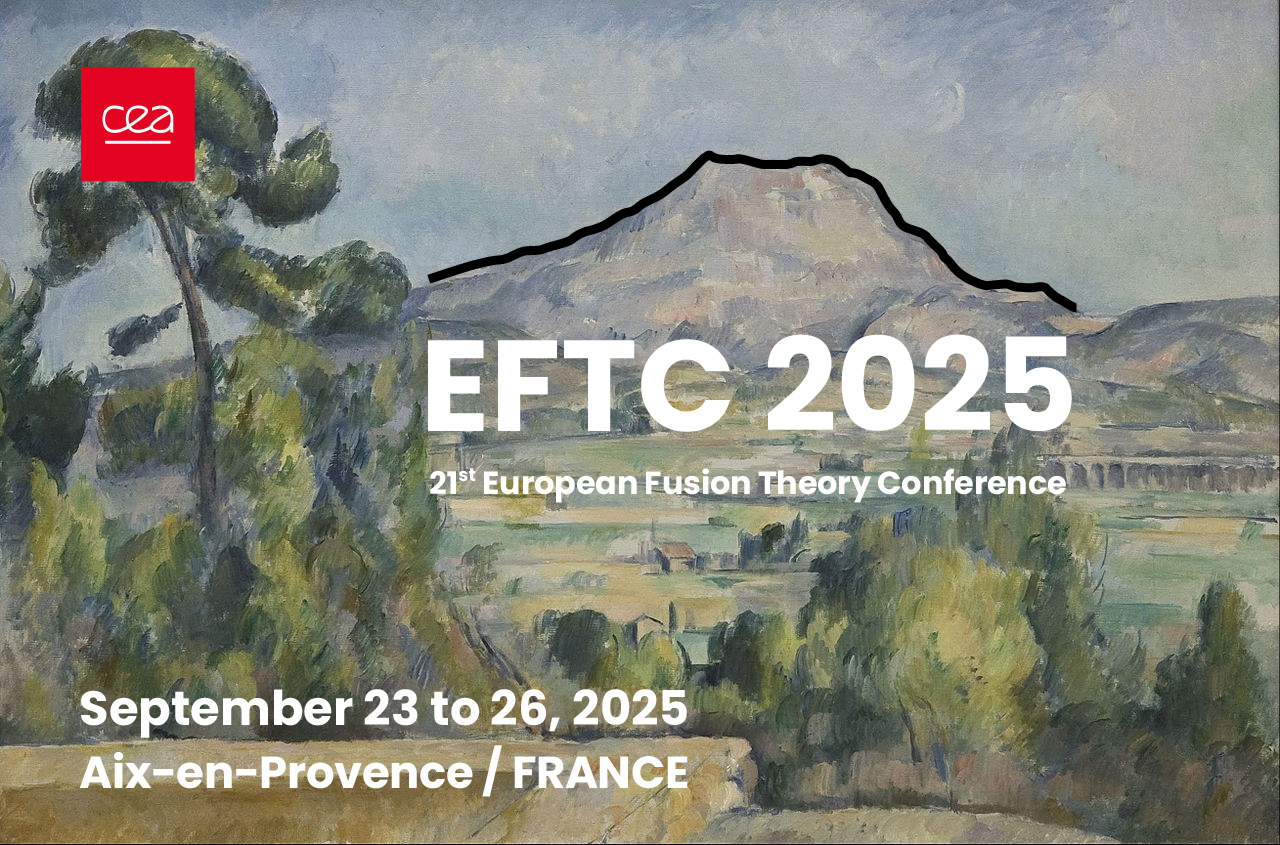Description
For the Poster list please click on 'Contribution list' down here
Solution of the drift kinetic equation [1] is a required step in analyzing and optimizing neoclassical transport in stellarators. A variety of codes [2-6] have been developed to handle the complex geometry and wide range of collisionality regimes present in stellarators. Existing codes are generally either high fidelity codes that are accurate in a wide range of regimes, but are too expensive...
The magnetised plasma sheath is a region that forms in front of a solid target and is composed of a magnetic presheath, where the electrostatic potential varies on the scale of the ion Larmor radius, and a Debye sheath, where the potential varies on the scale of the Debye length. The transmission of electrons and of their energy through the magnetised sheath must be calculated to find the wall...
Evaluation of the bootstrap current is an important part of stellarator optimization procedures aiming at self-consistent equilibria or configurations with strongly reduced bootstrap current. The later is especially relevant for an accurate control of the $\iota$ profile, enabling the operation of an island divertor. For such optimization workflows, a fast method of evaluating the bootstrap...
Burning plasmas in fusion reactors are complex systems where energetic particles (EP) play a fundamental role in cross-scale interactions [1]. This study reviews phase space zonal structures (PSZS) [2-5] and their significance in transport analyses. Using synthetic diagnostics from the HMGC and ORB5 codes [6,7], we illustrate the role of PSZS in capturing transport dynamics in burning plasmas...
We present a novel method for calculating particle and energy flows in the 6D kinetic Vlasov equation with adiabatic
electrons. This approach enables the determination of energy and particle fluxes from lower-order moments of
the distribution function, such as the kinetic energy density and the momentum transfer tensor. In addition to this
decomposition, we derive the residual Poynting flux...
The study presents global 3D simulations of a linear plasma device using the first-principles drift-reduced fluid code SOLEDGE3X. The effects of parallel currents on shaping the turbulent regime are investigated, focusing on the interplay between drift-wave and sheath-driven instabilities. In open field-line regions of a tokamak, sheath losses have traditionally been regarded as the sole...
The stellarator Wendelstein 7-X (W7-X) demonstrated the effectiveness of reducing neoclassical transport through magnetic field optimization [1]. Its confinement is primarily governed by turbulence arising from instabilities at scales comparable to the gyroradius [2,3]. For small plasma beta (the ratio of kinetic to magnetic pressure), these instabilities are predominantly electrostatic and...
This abstract outlines the motivations behind my PhD project and introduces preliminary work whose results will be presented in a poster format. The content consists of a set of turbulence simulations exploring the parameter space.
Accurate prediction of core turbulent transport, along with its coupling to edge transport models or physics-informed edge boundary conditions, is essential for developing operational scenarios for future fusion devices. Nonlinear gyrokinetic models for core transport, though highly accurate, are computationally expensive to use in this type of integrated modeling. Instead, quasilinear models...
The turbulence in the core of future devices will be very different from current devices [1]. Fast ions and electromagnetic (EM) effects have a complex impact on the turbulence both through linear effects, such as linear EM stabilization of electrostatic (ES) modes, and nonlinear effects, such as enhanced coupling to zonal flows. As an initial step towards better understanding this regime we...
In the last decades, the modelling of RF-driven toroidal current advanced importantly at the Lower Hybrid (LH) frequency in tokamaks, especially in non-inductive regimes [1]. Of particular importance is the understanding of spectral broadening in the scrape-off layer (SOL), enabling single-pass wave absorption [2], notably in in high-density, low-temperature plasmas with small aspect ratios....
Evidence from magnetically confined fusion experiments over the past decades shows that X-mode waves used for ECRH (X2) are prone to nonlinear wave interactions. These interactions are known as parametric decay instabilities, and they typically occur in localized regions of the plasma edge. The instabilities originate from thermal upper-hybrid (UH) waves that are trapped by non-monotonic...
We present an iterative algorithm for the self-consistent computation of the electrostatic potential in 3D magnetic fields using the guiding-center tracing code GORILLA. Due to the piecewise linear interpolation of electromagnetic field quantities leading to linear equations of motion within small volume elements, GORILLA has favourable computational costs while still retaining symplectic...
Recent experiments at the JET tokamak with the Be/W wall have led to the development of new H-mode regimes featuring high energy confinement and small edge-localized modes (ELMs). These regimes, achieved with low or no gas injection, reproduce key plasma parameters relevant to the ITER baseline scenario, such as $q_{95} = 3.2$, $\beta_{\text{p}} < 1$, $\beta_{\text{N}} = 1.8$–$2$, $H_{98} =...
Pressure anisotropy due to auxiliary heated fast ions or runaway electrons can significantly
impact the macroscopic magnetic equilibrium. Moreover, since the plasma toroidal
diamagnetism is predominantly impacted by the perpendicular pressure, measurements of the
outside poloidal magnetic field combined with measurements of the toroidal flux allow to
distinguish between both components, as...
In tokamak plasmas, micro-tearing modes (MTMs) are destabilised at high plasma beta and large electron temperature gradient. They are electro-magnetic instabilities particularly prone to be excited in spherical tokamaks, where beta is large, and in improved confinement regimes or in the pedestal for conventional tokamaks.
For MTMs, the transport arising from magnetic flutter scales as the...

